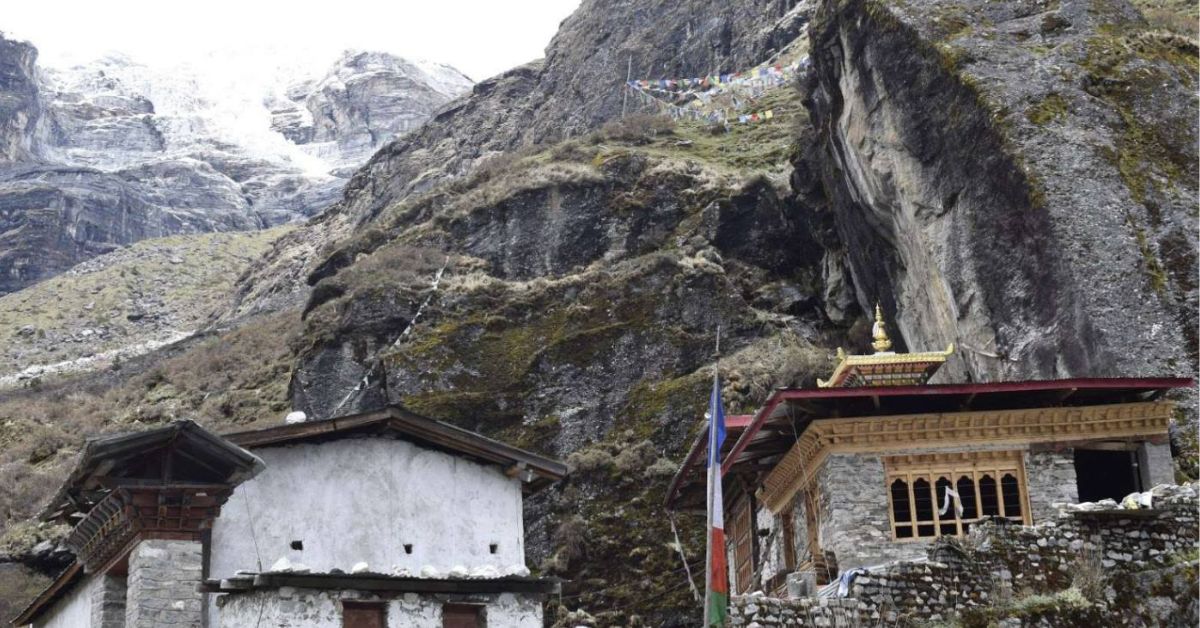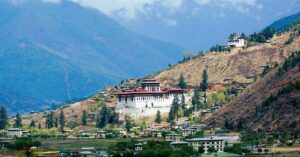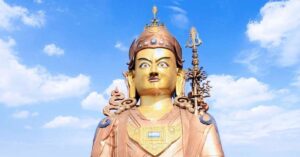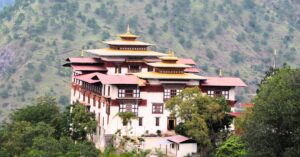Jomolhari is a sacred mountain with a meditation cave of Guru Rinpoche and Khandro Yeshe Tsogyal located at an altitude of more than 4,600 meters above sea level. The Jomolhari Temple is built near the cave within the Jurisdiction of Soe Gewog of Lingzhi Drungkhag under Thimphu Dzongkhag. However, not many people visit this holy site due to the altitude and distance.
How to Reach Guru Rinpoche’s Meditation Cave at Jomolhari
To get to the meditation cave of Guru Rinpoche, visitors must trek through the Chomolhari mountain range. It is a full two-day Journey on foot from Misi Bridge in Paro to the temple, and it usually takes three days to reach the temple from the same point, traveling with a porter and pony. The most popular trek is the Jomolhari Base Camp Trek, a 7-day trek from Paro to Chomolhari base camp at Jangothang, returning via the same route or by an alternative trail to Paro.
Jomolhari Base Camp Trek
The Jomolhari Base Camp Trek, also known as the Chomolhari Trek, is a trek from Paro to the Jomolhari and covers a distance of approximately 70 kilometers. It takes 6-7 days to do the trek. The trek starts from the historic Drugyal Dzong and follows the Pachhu (Paro River) valley to Jomolhari Base Camp, also known as Jangothang Base Camp. The base camp is at an altitude of 4,115 meters and offers trekkers a stunning view of Mount Chomolhari. The trek involves crossing two mountain passes, Nyile La and Yeli La, and passing through remote locations and yak herder settlements. The trek is graded as medium to hard in difficulty and requires a fairly high level of physical fitness.
Sacred Relics to See at Jomolhari Ney
- Meditation cave of Guru Rinpoche;
- A holy water of Guru Rinpoche;
- A meditation cave of Milarepa;
- A meditation cave of Gyalwa Lorepa;
- A pair of horns (dung);
- A mountain of 108 naturally formed golden stupas;
- Image of Buddha formed of natural rock;
- Jomolhari temple;
- A statue of Gyalwa Lorepa;
- A holy script gifted to Gyalwa Lorepa by Aum Jomo;
- A unique Kongbu;
- A statue of Goddess Tsheringma.
Also Read: Guru Rinpoche in Bhutan: His Visits to Bhutan and Sacred Sites
Historical Significance of Guru Rinpoche’s Meditation Cave at Jomolhari
During Guru Rinpoche’s second visit to Bhutan with Khandro Yeshe Tsogyal from Tibet, he blessed many places across the country and finally came to Jomolhari from Haa Rangtse Ney. It is believed that Guru Rinpoche meditated before flying back to Tibet. Therefore, the Meditation Cave of Guru Rinpoche at Chomolhari is a sacred site in Bhutan.
Jomolhari Ney was also visited, meditated, and blessed by many prominent religious masters, including Milarepa, Gyalwa Lorepa, Phajo Drugom Zhigpo, and Drukpa Kunley.
Description of Guru Rinpoche’s Meditation Cave
When you pilgrimage to Jomolhari, the first entrance to the sacred place you reach is Tshogdugang, where there is a pair of horns (dung). These horns are said to be used by Aum Jomo to receive Guru Rinpoche in ceremonial processions, which were later hidden as treasure.
After walking about one hour from there, you reach the second entrance to the sacred mountain of 108 naturally-formed golden stupas. After walking a little further, in the middle of the cliff, one can see the image of Buddha formed of natural rock, and to the side, the forms of the hunter Gonpo Dorje’s bow, arrow, and hounds. On the other side, there is a cave where Jetsun Milarepa meditated.
As one goes up further there is a natural rock in the shape of a clockwise side of the cave, three rocks appear naturally like forms of the Lord of the three families; on the left rock, one can see a meditation cave and a blessed water source of Guru Rinpoche in the form of the wish-granting tree. People say something like a treasured door is a golden door on the middle rock. On the right rock is a single and a pair of clockwise white conch, and traces of the treasures discovered earlier.
Since Guru Rinpoche’s treasures are inside these three rocks, one can see the natural inscription of the Dakini Code Script (khandro dayig) from the outside.
There is also a Drubkhang of Khandro Lhachoe Drolma. She was one of the thirteenth favorite consorts of Lama Drukpa Kinley. Lam Drukpa Kinley instructed her to meditate at Jumolhari. It is said that she attained enlightenment after three years of meditation.
Jomolhari Temple
Gyalwa Lorepa himself built the Jomolhari Temple in the 12th century. However, except for the important relics, the temple was believed to have been washed away by a flash flood. Later, the temple was restored adjacent to the cave of Gyalwa Lorepa and can still be seen. The temple has a statue of Gyalwa Lorepa, a holy scripture gifted to Gyalwa Lorepa by Aum Jomo, a unique Kongbu, and a set of bowls as the main ancient relics. A statue of Goddess Tsheringma was also installed later. The temple, which stands in solitary in the wilderness, is being catered to by a local caretaker and a Lama appointed by the Zhung Dratshang.
Accommodation at Guru Rinpoche’s Meditation Cave
There is no accommodation at Jomolhari. Religious practitioners and pilgrims visiting Mount Chomolhari stay at the temple. You can also stay at the Chomolhari Base Camp.
Best Time to Visit Jomolhari
The best time to visit Jomolhari Temple and the surrounding area is Spring (March to May) and Autumn (September to November). During these months, the weather is usually dry, and the clear skies make it easier to trek and offer better mountain views. During these seasons, you can also enjoy the beautiful landscapes, fauna, and flora. However, it is important to note that the weather in Bhutan can be unpredictable, and trekkers should be prepared for sudden changes in weather conditions. You can visit major pilgrimage sites in Thimphu with the Bhutan Pilgrimage Package.
Frequently Asked Questions
Where is Jomolhari located in Bhutan?
Jomolhari is located in the Paro district of Bhutan, straddling the border with China’s Tibet Autonomous Region. There is a sacred site of Guru Rinpoche called Jomolhari Nye.
What is the cultural significance of Jomolhari in Bhutan?
Jomolhari, also known as Chomolhari, holds significant cultural and spiritual importance in Bhutan. It is the sacred site blessed by Guru Padmasambhava. Jomolhari is also considered a sacred site as it is associated with the mountain goddess, Ama Jomo, or the “Mother Goddess”.
How do the Bhutanese people celebrate Jomolhari?
The Bhutanese people celebrate Chomolhari through the Jomolhari Mountain Festival, a two-day event held at the mountain’s base. In addition to celebrating the distinctive culture and way of life of Bhutan’s highlanders, the festival seeks to advance the conservation of the snow leopard. It includes traditional sporting activities such as darts and horse riding, and cultural programs, showcasing the delicacies of the highland people. The event is organized at the base of Mount Jomolhari, allowing tourists to experience the picturesque landscape, diverse flora and fauna, and the spectacular view of the mountain during their trek.
Enjoyed reading this blog?




